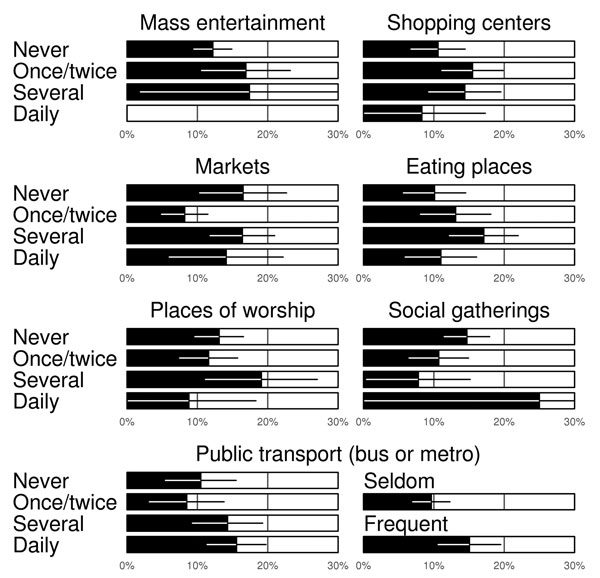Volume 17, Number 8—August 2011
CME ACTIVITY - Research
Risk Factors for Pandemic (H1N1) 2009 Seroconversion among Adults, Singapore, 2009
Figure 2

Figure 2. Study of seroconversion for pandemic (H1N1) 2009 virus, Singapore, June–September 2009. Public places were as follows: mass entertainment venues (e.g., cinemas, stadiums, and theaters; shopping centers, markets, and supermarkets; restaurants, bars, clubs, and other eating or drinking establishments; places of worship; and other social gatherings with >10 persons. Horizontal lines denote error bars for the estimates.
Page created: September 01, 2011
Page updated: September 01, 2011
Page reviewed: September 01, 2011
The conclusions, findings, and opinions expressed by authors contributing to this journal do not necessarily reflect the official position of the U.S. Department of Health and Human Services, the Public Health Service, the Centers for Disease Control and Prevention, or the authors' affiliated institutions. Use of trade names is for identification only and does not imply endorsement by any of the groups named above.